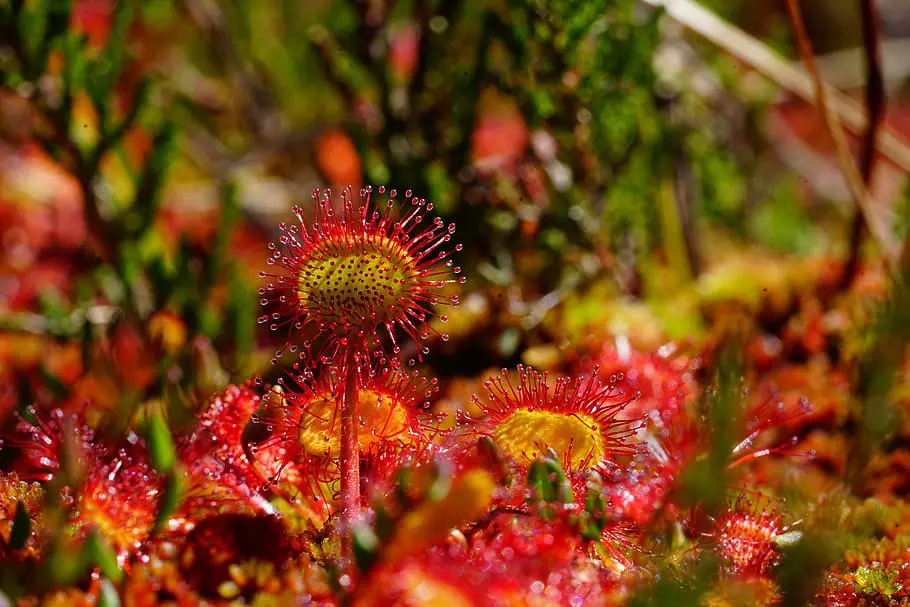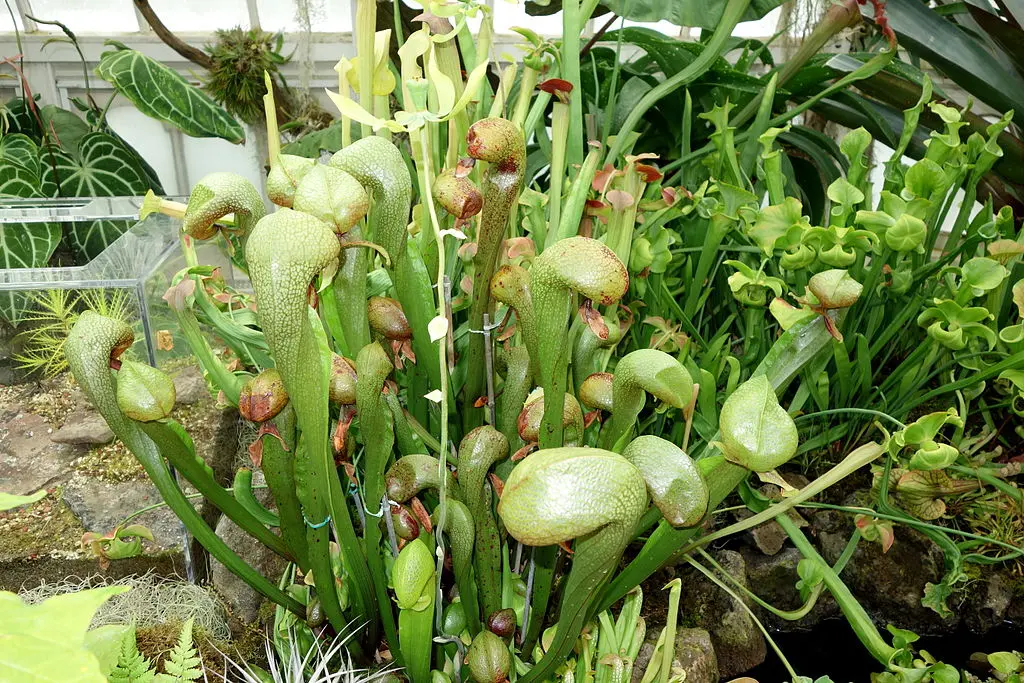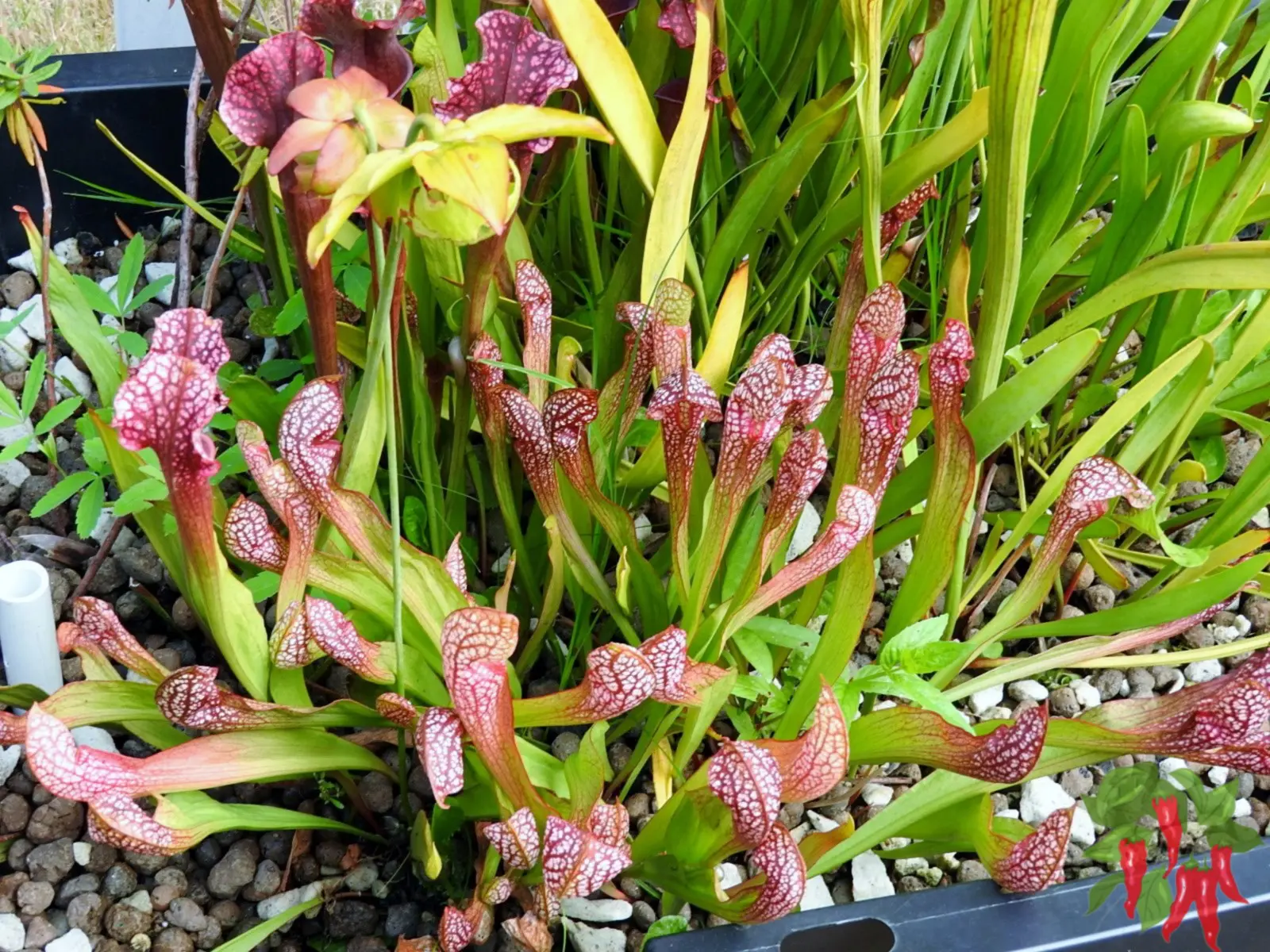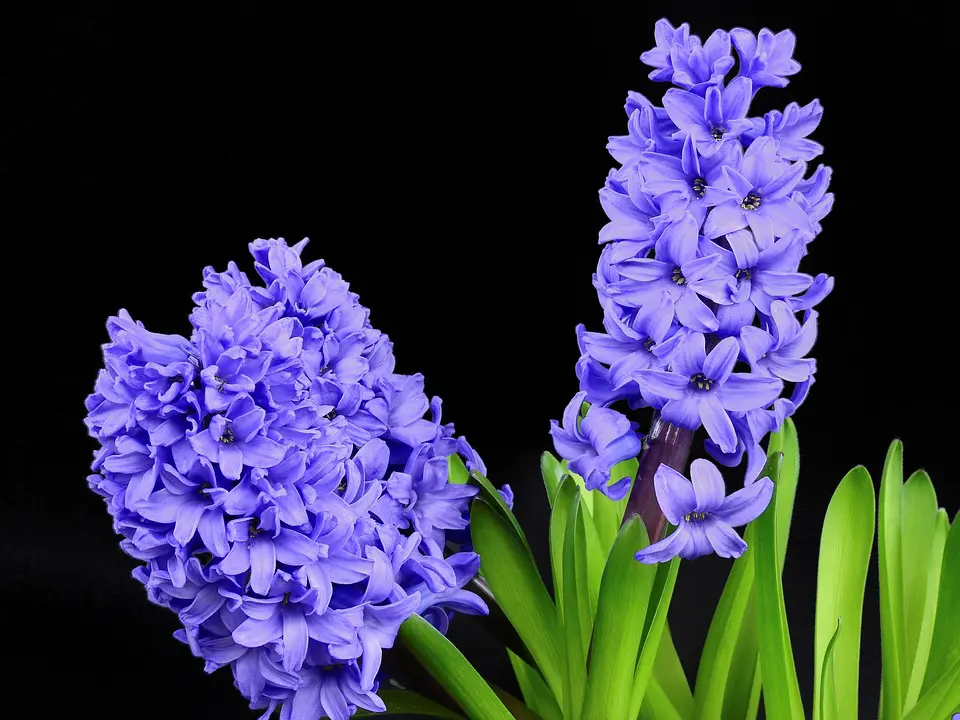This post contains affiliate links. If you buy something from one of our links we may earn a commission. Thanks
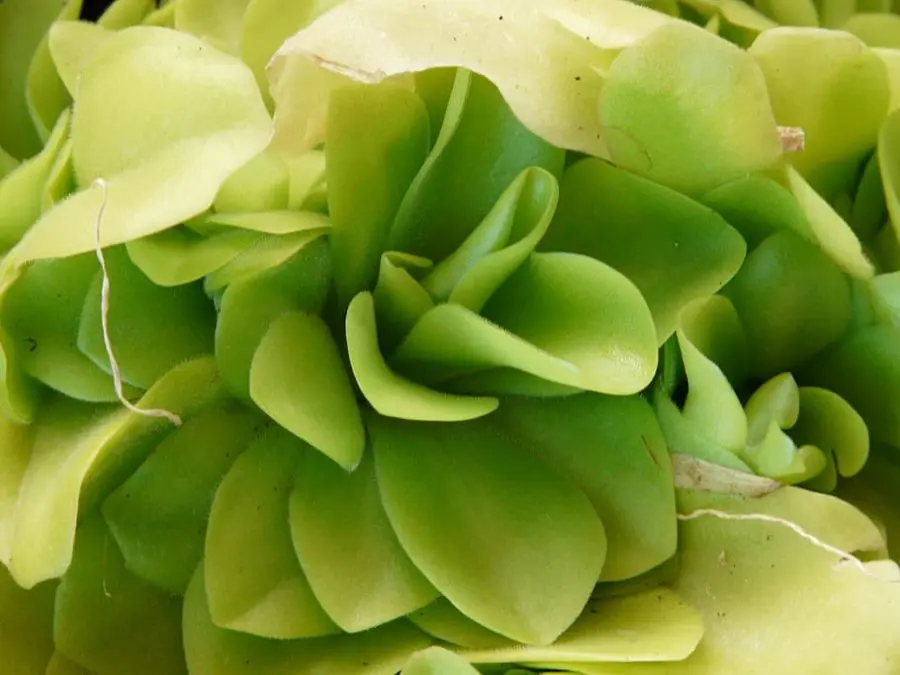
Dive into the world of growing butterworts indoors! Discover the magic of these carnivorous plants and how to nurture them in your home.
To grow butterworts indoors, provide them with bright, indirect light, use a well-draining soil mix, and maintain consistent moisture. Ensure a humid environment, feed them occasionally with small insects, and avoid overwatering. With the right care, these carnivorous plants will thrive and become a captivating addition to your indoor garden.
Growing Butterworts Indoors
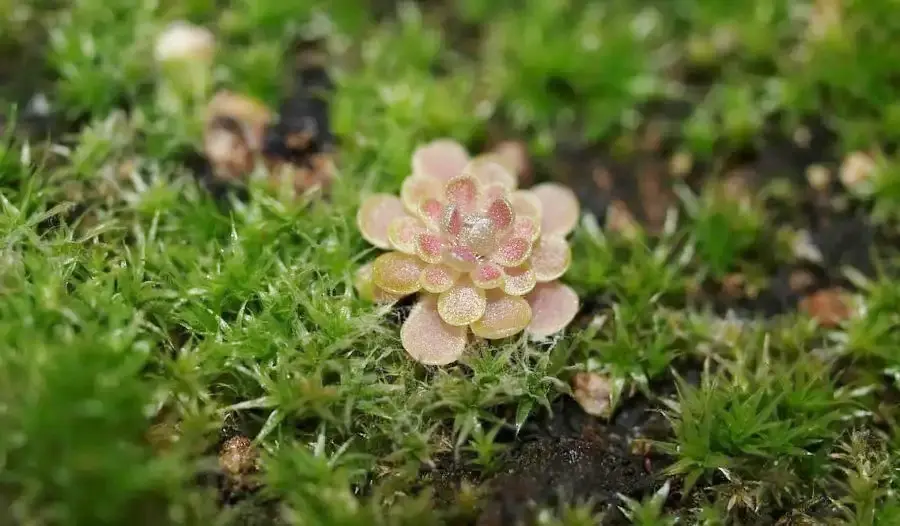
Ever thought of adding a touch of the wild to your living room? Well, growing butterworts indoors is the perfect way to do just that!
These captivating carnivorous plants not only add beauty to your space but also come with a fascinating backstory.
Keep reading and you’ll soon know about growing butterwort. Let’s dive in and explore the world of butterworts together!
Butterworts, scientifically known as Pinguicula, are fascinating Carnivorous Plants that have intrigued botanists and plant enthusiasts alike.
This plant offers both botanical elegance and carnivorous intrigue.
Their unique ability to trap insects with their sticky dew-covered leaves makes them a captivating addition to any indoor garden.
This guide will delve into the intricacies of nurturing these plants indoors.
You can find live Butterworts and seeds for sale on Amazon
Understanding Butterworts
Butterworts hail from various regions, each with its unique characteristics.
What regions are butterworts from?
Butterworts (Pinguicula) are found in a wide range of regions across the world. Here’s a breakdown of their native habitats:
North America: Many species of butterworts are native to North America, especially in the southeastern United States and Mexico. The U.S. species are primarily found in the Gulf Coast states, the eastern seaboard, and as far north as Canada.
Central and South America: Apart from Mexico, which boasts a significant number of species, butterworts can also be found in Central American countries and some parts of South America.
Europe: Butterworts are native to various parts of Europe, especially the northern and western regions. Countries like the UK, Spain, and Scandinavia have native species.
Asia: Some species of butterworts are native to northern and eastern parts of Asia, including Siberia and the Kamchatka Peninsula.
Arctic Regions: A few species of butterworts are adapted to the harsh conditions of the Arctic tundra.
Different species have adapted to a variety of habitats within these regions, from alpine meadows to boggy areas, and from temperate forests to tropical environments.
This wide distribution and adaptability make butterworts a fascinating group of carnivorous plants.
Their carnivorous nature, combined with their vibrant flowers, makes them a standout in the plant kingdom.
Pinguicula, commonly known as butterworts, is a genus of carnivorous flowering plants in the family Lentibulariaceae. They use sticky, glandular leaves to lure, trap, and digest insects in order to supplement the poor mineral nutrition they obtain from the environment. Of the roughly 80 currently known species, 13 are native to Europe, 9 to North America, and some to northern Asia. The largest number of species is in South and Central America. According to Wikipedia.
Origin and Distribution
Originating from diverse regions, from the temperate zones to the tropical areas, Butterworts have adapted to various climates.
Different Types: Cool Temperate, Warm Temperate, and Tropical
There are primarily three types of Butterworts: Cool Temperate, Warm Temperate, and Tropical.
Each type has its specific care requirements and growth patterns.
The Mechanism Behind Their Trapping
The leaves of the Butterwort plant secrete a sticky dew. This dew, which gives the plant its name, traps unsuspecting insects.
Once trapped, the plant slowly digests its prey, absorbing essential nutrients.
Pinguicula Types and Growing Conditions
| Cool Temperate Butterworts | |
|---|---|
| Pinguicula grandiflora | Light: Full to partial sunlight. Water: Keep soil consistently moist. Soil: Well-draining mix of peat and sand. Winter Dormancy: Reduce watering and allow plant to rest. |
| Pinguicula vulgaris | Light: Full sunlight. Water: Regular watering but allow soil to slightly dry between waterings. Soil: Peat-based mix with added sand or perlite. Winter Dormancy: Essential; reduce watering. |
| Warm Temperate Butterworts | |
| Pinguicula primuliflora (Southern Butterwort) | Light: Bright, indirect light. Water: Keep soil moist but not waterlogged. Soil: Peat and sand mix. Winter Dormancy: Not strict, but reduce watering. |
| Pinguicula lutea | Light: Partial sunlight. Water: Regular watering. Soil: Peat-based mix. Winter Dormancy: Mild reduction in watering. |
| Tropical Butterworts | |
| Pinguicula moranensis | Light: Bright, indirect light. Water: Allow top of soil to dry between waterings. Soil: Mix of peat and perlite. Temperature: Prefers warmer temperatures. |
| Pinguicula gigantea | Light: Bright, indirect light. Water: Moderate watering. Soil: Well-draining mix. Temperature: Warm, tropical conditions. |
| Pinguicula ehlersiae | Light: Bright light with some direct morning sunlight. Water: Regular watering but allow for slight drying between. Soil: Peat and sand mix. Temperature: Consistently warm. |
Pinguicula Top Tips & Info
Growing Butterworts indoors can be a rewarding experience. With the right care and attention, these Carnivorous Plants can thrive and become a conversation starter in your home.
Butterwort Care Difficulty
While Butterworts are captivating, they aren’t the most challenging plants to care for.
With a basic understanding of their needs, even a novice gardener can successfully grow them.
Pinguicula Soil Moisture Requirements
The Soil Mix for Butterworts should retain some moisture but not be overly wet.
Overwatering can lead to root rot, so it’s essential to strike a balance.
Light Requirements
Direct Sunlight is crucial for Butterworts. However, they shouldn’t be exposed to harsh midday sun.
A spot with morning sunlight or dappled afternoon light is ideal.
Prey Preferences
Being Carnivorous Plants, Butterworts feed on small insects.
The Dew on their leaves traps these insects, providing the plant with essential nutrients.
Repotting Insights
Repotting Butterworts can give them a fresh start. Ensure you use the right Soil Mix and avoid compacting the soil too much.
Seasonal Leaf Changes
During Winter Dormancy, Butterworts undergo a transformation. Their leaves become more succulent-like, adapting to the colder temperatures and reduced sunlight.
Location & Light Requirements
The right location can make all the difference in the growth and health of your Butterwort.
When it comes to cultivating a thriving indoor garden, understanding the nuances of location and light is paramount.
Just as we humans need the right environment to flourish, plants like butterworts have specific preferences that can make all the difference in their growth and vitality.
For butterworts, these factors are even more crucial, given their unique carnivorous nature and the delicate balance they maintain in their natural habitats.
Let’s delve into the world of location and light requirements, ensuring that your butterworts not only survive but truly thrive in your indoor space.
Ideal Indoor Locations
A sunny windowsill or a spot with Artificial Lighting can be perfect for Butterworts.
They thrive in locations where they receive ample light but are shielded from extreme temperatures.
Sunlight Requirements and Avoidance of Direct Sunlight
While Butterworts love light, Direct Sunlight, especially during the hot afternoons, can be detrimental.
It’s best to provide them with morning sunlight or place them in a location with filtered light during the afternoon.
Artificial Lighting Tips
If natural light is scarce, Artificial Lighting like LEDs can come to the rescue. Ensure the light isn’t too harsh or too close to the plants.
Watering, Humidity & Feeding
Navigating the waters of plant care, quite literally, requires a keen understanding of your plant’s unique thirst, its craving for moisture in the air, and its appetite for nutrients.
Especially for specialized plants like butterworts, striking the right balance in watering, maintaining optimal humidity, and feeding can be the difference between a flourishing plant and a wilting one.
As we dive into the essentials of Watering, Humidity, and Feeding, we’ll uncover the secrets to keeping your butterworts hydrated, happy, and well-nourished, ensuring they showcase their best selves in your indoor garden.
Watering:
Soft Water is Best:
Always use distilled water, rainwater, or reverse osmosis water for butterworts. They are sensitive to the minerals found in tap water which can harm them.
Avoid Overwatering:
While butterworts like moisture, it’s essential to avoid waterlogged soil.
Ensure the pot has drainage holes and allow the top layer of the soil to dry out slightly between waterings.
Watering Technique:
Instead of watering from the top, consider using the tray method.
Place the pot in a tray filled with water, allowing the plant to absorb moisture from the bottom.
This method reduces the risk of rotting the crown of the plant.
Humidity:
Maintain Moderate Humidity:
Butterworts thrive in a moderately humid environment. If you live in a dry area, consider placing a humidifier near the plant or placing the pot on a tray filled with water and pebbles.
Avoid Excessive Humidity:
While they appreciate humidity, too much can lead to fungal and bacterial issues. Ensure there’s good air circulation around the plant.
Feeding:
Natural Prey is Best:
Butterworts are carnivorous and get most of their nutrients from the insects they trap.
There’s usually no need for additional feeding, especially if they’re catching insects regularly.
Avoid Commercial Fertilizers:
Butterworts are adapted to nutrient-poor soils. Using commercial fertilizers can harm them.
If you feel the need to feed them, a very diluted orchid fertilizer can be used sparingly.
Feeding Technique:
If your butterwort isn’t catching enough insects, you can occasionally feed it small insects like fruit flies.
Place the insect on the sticky leaf surface, and the plant will do the rest.
Soil, Substrate & Repotting
The foundation of any plant’s health lies in the soil it’s planted in, and butterworts are no exception.
These carnivorous beauties, with their unique insect-trapping mechanism, require a specific type of substrate to truly flourish.
Let’s delve into the world of soil, substrate, and the art of repotting to ensure your butterworts have the best environment to showcase their splendor.
Ideal Soil Composition for Different Types
The soil for butterworts isn’t your typical garden variety. Given their natural habitat of nutrient-poor environments, it’s crucial to mimic these conditions in your home.
Sphagnum Peat and Perlite:
This combination offers the right balance of moisture retention and drainage.
While sphagnum peat provides the acidity butterworts love, perlite ensures proper aeration, preventing root rot.
Avoid Nutrient-rich Soils:
Remember, in the wild, butterworts have adapted to thrive in areas where other plants struggle.
Using a nutrient-rich potting mix can harm them.
Repotting Frequency and Best Practices
Just like us, plants too can outgrow their homes.
Repotting isn’t just about giving them more space; it’s about rejuvenating their environment.
When to Repot:
Ideally, butterworts should be repotted every 1-2 years. This refreshes their soil, providing them with a renewed environment.
Gentle Handling: Butterworts have delicate roots. When repotting, handle with care, ensuring minimal disturbance to the root system.
Signs Indicating the Need for Repotting
Sometimes, plants give us signals, indicating their needs. Knowing what to look for can make all the difference in their health.
Stunted Growth:
If your butterwort isn’t growing as robustly as it should, it might be feeling cramped. A bigger pot might be in order.
Exhausted Soil:
Over time, the soil loses its structure and can become compacted.
If the substrate looks tired, lacks aeration, or doesn’t drain well, it’s a sign to repot.
Visible Roots:
If you notice roots emerging from the drainage holes or circling the surface, it’s a clear indication that your butterwort is seeking more space.
By understanding and catering to the specific soil and repotting needs of butterworts, you’re setting them up for a life of vibrant growth and captivating beauty.
Common Issues & Solutions
Every plant has its set of challenges, and butterworts are no exception.
While they bring a touch of the wild indoors with their carnivorous nature, they also come with their own unique set of needs and potential issues.
Understanding these challenges and knowing how to address them is the key to ensuring your butterworts remain healthy and vibrant.
Pests and Diseases
Every gardener’s journey, no matter how green their thumb, is occasionally marred by the unwelcome appearance of pests and diseases.
These tiny invaders and silent ailments can quickly turn a thriving garden into a struggling one.
Especially with unique plants like butterworts, understanding potential threats and how to combat them is crucial.
Let’s delve into the common pests and diseases that might target your butterworts and arm ourselves with the knowledge to keep them at bay.
Even though butterworts are insect trappers, they aren’t immune to pests.
Aphids Alert:
These tiny pests can be a nuisance. Regularly inspect your plant, especially under the leaves.
If you spot aphids, using a soft brush or even a gentle stream of water can help dislodge them.
Fungal Issues:
High humidity can lead to fungal growth. Ensure good air circulation and avoid overwatering to prevent this.
Overfeeding Issues
The carnivorous nature of butterworts is a marvel, but there’s a balance to maintain.
Natural Prey is Best:
While it might be tempting to feed your butterwort frequently, it’s best to let them catch their own prey.
Overfeeding can lead to rot and other health issues.
Avoid Commercial Fertilizers:
Butterworts thrive in nutrient-poor soils. Introducing commercial fertilizers can disrupt this balance and harm the plant.
Signs of Inadequate Light or Water
Like all plants, butterworts give signs when they’re not in their ideal conditions.
Pale Leaves:
If the leaves of your butterwort are losing their vibrant green hue, it might be a sign of insufficient light.
Consider relocating the plant to a brighter spot.
Stunted Growth:
A butterwort that isn’t growing might be thirsty. Check the soil moisture levels and adjust your watering routine accordingly.
In the world of indoor gardening, challenges are inevitable.
But with a keen eye and a bit of knowledge, you can ensure that your butterworts overcome these hurdles and continue to be a captivating addition to your space.
Special Focus: Mexican Butterworts
Mexican Butterworts, with their radiant blooms and distinct features, are a captivating subset of the Tropical Butterworts family.
Originating from the diverse terrains of Mexico, these plants bring a splash of color and a hint of the exotic to any indoor garden.
Unique Characteristics of Mexican Butterworts
Vibrant Blooms:
One of the standout features of Mexican Butterworts is their striking flowers, which range from deep purples to bright pinks, adding a burst of color to your plant collection.
Distinctive Foliage:
Beyond their blooms, their foliage is equally intriguing. The varied leaf shapes, often with a rosette appearance, are not just for show.
They play a crucial role in the plant’s insect-trapping mechanism.
Care Tips Specifically for Mexican Varieties
Warmth is Key:
Native to the warmer regions of Mexico, these butterworts thrive in slightly elevated temperatures.
While they’re adaptable, it’s essential to shield them from sudden cold snaps or prolonged chilly periods.
Light and Soil:
Ample light is crucial for these plants, especially if you want to see them bloom.
Pair this with a well-draining soil mix, mimicking their natural habitat, to ensure they remain healthy and vibrant.
By giving special attention to the unique needs of Mexican Butterworts, you can enjoy the beauty and intrigue they bring to your indoor gardening experience.
FAQs
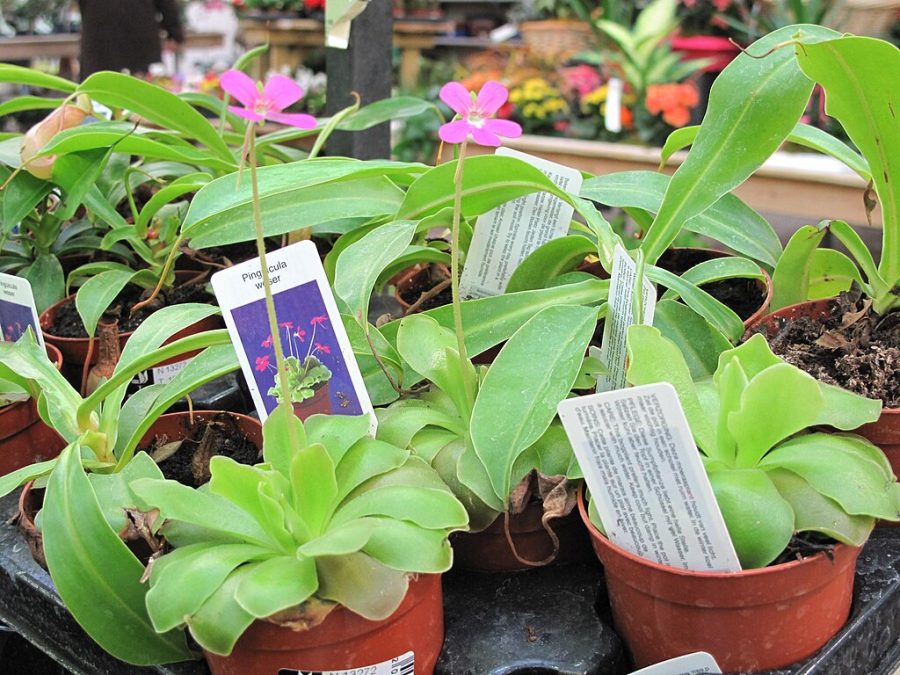
Got questions about butterworts? You’re in good company!
These captivating carnivorous plants often pique interest and lead to a flurry of inquiries.
Whether you’re a seasoned gardener or a curious newbie, we’ve got the answers to some of the most burning questions about butterworts. Let’s unravel the mysteries together!
Q: Can I keep a butterwort indoors?
A: Absolutely! Butterworts are perfectly adaptable to indoor environments.
With the right conditions, they can thrive on windowsills, terrariums, or even under artificial lights.
Their vibrant flowers and unique insect-trapping mechanism make them a fascinating addition to any indoor garden.
Q: Are butterworts easy to grow?
A: Yes, butterworts can be quite accommodating.
While they have specific needs, like any plant, once you understand their preferences for light, water, and soil, they can be relatively straightforward to care for.
Their resilience and adaptability make them a delightful choice for both novice and experienced gardeners.
Q: How much light do butterworts need?
A: Butterworts crave bright, indirect light. While they love a good dose of sunshine, it’s essential to shield them from the harsh midday sun.
A spot with morning sunlight or filtered afternoon light is ideal. If natural light is limited, artificial grow lights can also do the trick.
Q: How do you care for Mexican butterwort indoors?
A: Mexican butterworts, a subtype of tropical butterworts, are known for their vibrant flowers.
They prefer well-draining soil, bright but indirect light, and slightly warmer temperatures compared to their temperate counterparts.
Regular watering, without letting the soil get waterlogged, and protection from cold drafts will keep them happy and blooming.
Q: How often should Butterworts be watered?
A: The watering frequency for butterworts depends on their type and the environment they’re in.
Generally, the soil should be kept moist but not soggy. It’s a good practice to let the top layer of the soil dry out slightly between waterings. Always use soft water to avoid mineral buildup.
Q: Can Butterworts thrive in direct sunlight?
A: Butterworts enjoy bright light, but direct midday sunlight can be too intense and might scorch their leaves.
Morning sun or filtered afternoon sunlight is best. If you’re growing them indoors, placing them near a window with sheer curtains can provide the right amount of light.
Q: What type of soil is best for Butterworts?
A: Butterworts prefer a well-draining soil mix. A combination of sphagnum peat moss and perlite or sand works well.
It’s essential to avoid regular potting soil or any mix with added fertilizers, as these can harm the plant.
The goal is to mimic their natural habitat, which is typically nutrient-poor and well-draining.
Conclusion
Embarking on the journey of growing butterworts indoors is akin to stepping into a botanical adventure, one filled with wonder, intrigue, and nature’s clever designs.
These aren’t just your typical houseplants. This plant with its botanical elegance represents a group of carnivorous plants that have evolved over millennia to adapt to their surroundings in the most ingenious ways.
By choosing to cultivate them, you’re not only enhancing your indoor space with their beauty but also inviting a slice of evolutionary marvel into your home.
As you delve deeper into understanding their needs and marvel at their unique insect-trapping abilities, you’ll find that butterworts have a way of captivating the heart and mind, making indoor gardening an experience of continuous learning and awe.
Final Thoughts
Venturing into the realm of growing butterworts indoors is more than just adding another plant to your collection.
It’s about embracing a piece of nature’s marvel.
Nature’s Ingenious Design:
The unique insect-trapping mechanism of butterworts serves a dual purpose.
Firstly, it’s a testament to nature’s ingenuity, demonstrating a plant’s ability to adapt and sustain itself in nutrient-poor environments.
This captivating process not only keeps pesky insects at bay, acting as a natural pest deterrent, but it also offers a dynamic, ever-changing display that sparks curiosity and invites questions from onlookers.
It’s a living piece of art and science combined.
The Allure of Butterworts:
The allure of butterworts goes beyond their carnivorous nature. Their vibrant blooms and varied leaf structures offer aesthetic appeal, making them a centerpiece in any indoor garden setting.
While their exotic nature might seem daunting at first, it’s a reminder that with patience, research, and a bit of dedication, even the most unique and unfamiliar plants can flourish under our care.
Embracing butterworts is a journey of discovery, understanding, and ultimately, a celebration of nature’s diversity.










